26 April, 2022
When you consider what an enormous, life-changing financial commitment buying a home is, it’s quite remarkable that most home buyers make the decision to buy after one or two short visits to the property.
Unlike a car, you can’t test drive your home before you buy it so the only way to know for certain what’s going on under the surface is to have a pre-purchase building inspection carried out.
Not getting one done can leave you exposed to enormous repair bills to rectify any major structural faults and other issues.
Russell McCarthy from WA Building Inspections says he has inspected homes with major structural faults that have rendered them so unsafe they have been condemned.
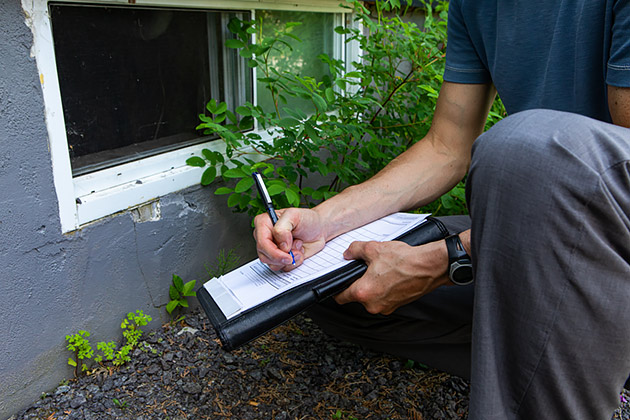
He urges home buyers to exercise caution when it comes to signing the Offer and Acceptance form.
“I always tell people don’t put in an offer that’s just subject to a building and pest inspection. They should always say it’s subject to a building inspection, pest inspection and due diligence, because that gives them the opportunity to get out of it if they need to. It says, ‘my contract is affected by what I see and what I see is subject to my own independent interpretation’.”
Being a binding legal agreement, the conditions you include on an Offer and Acceptance form could either provide you with an easy way out in the event that something is not right or potentially condemn you to what could be a huge financial mistake.
Once you have the correct opt-out clause on your Offer to Purchase, a thorough building inspection is the only way to ‘test drive’ your home before you buy it.
What does a pre-purchase building inspection cover?
Building inspections typically cover major structural defects such as building subsidence, along with other significant defects that could result in loss of amenity, such as faulty plumbing or roof leaks. In addition to these two levels of defects, they should also cover safety issues, such as lack of pool fencing and exposed wiring, and other minor items that can provide a picture of what maintenance may be needed in the future.
McCarthy says faults found in WA homes vary with the materials use in the build and the age of the home.
“Homes built in and around Perth before the 1980s that were built on limestone blocks face issues such as undulating flooring and termite damage. They can have moisture that stays under the home from weather events, known as ponding. Whereas homes built on concrete slabs have other issues that arise when you don’t have the benefits of a suspended floor.”
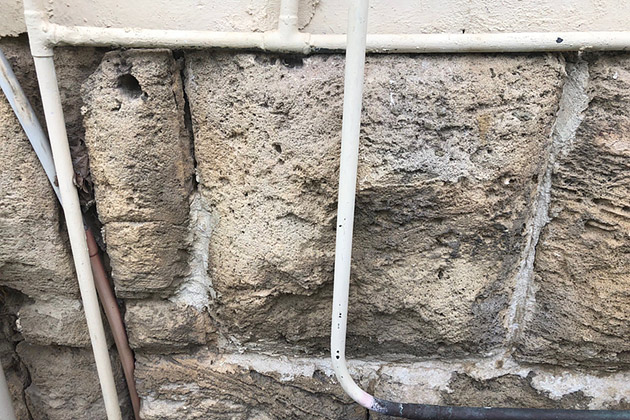
Subsidence of the home’s footings is a common major structural fault found during a building inspection, where the footings begin to sink due to poor drainage. Heaving or liquefaction is also common and occurs in homes built on a concrete slab.
“With a slab on ground, a large tree could lead to liquefaction which causes the side walls to be pushed in an upward direction leading to massive issues, including cracking the slab itself. It can expose metal in the slab which can also lead to concrete cancer.
“A timber veneer home, which may have a mix of a stud wall and a brick wall, can have some benefits in that you’re not going to see the same amount of cracking for example. The downside is because you’ve got timber in your walls you’ve got a massive access point for termites.”
Cracking in a home, whether big or small, can tell an interesting story about how that property is reacting to weather elements and water subsidence, says McCarthy.
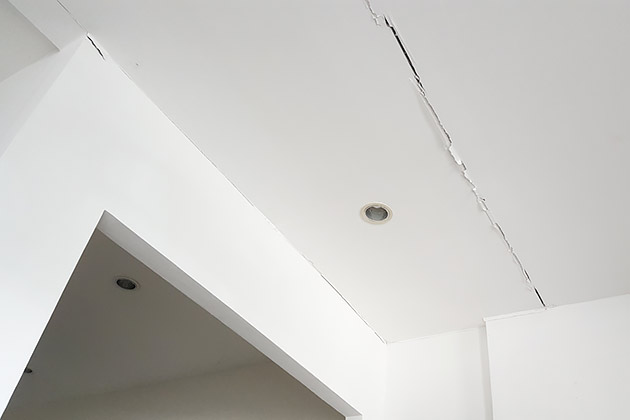
“Sometimes you can have a very small crack that can lead to a very big problem, and sometimes you can have a large crack that’s no issue at all.”
Earth works from another home being built nearby can cause cracking in the dwellings around it. The shaking of the ground causes water to rise to the surface leading to liquefaction. This can impact a home’s footings and cause subsidence.
“It depends on the soil type. We get good soil, class A soil and we also get M-class. In a good sandy soil, when it rains the water discharges into the soil and gets away from the footings. In more of a clay-based soil we get heaving, where the soil expands and causes upward pressure so it can start cracking the ceiling, cracking the roof. There are ways that engineers can deal with it but if it’s a very old home, you could be facing a bowl-over.
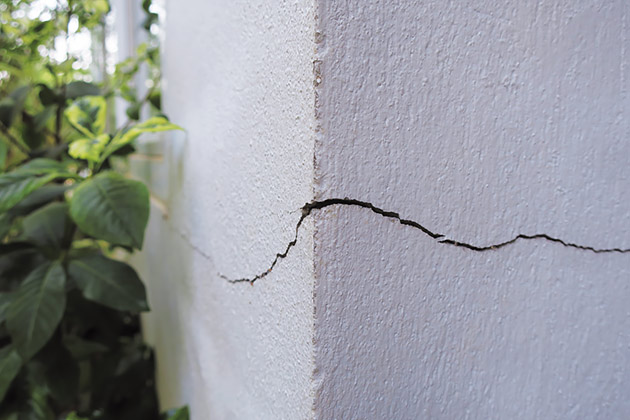
Not all defects in a home develop with time and age; some are present from the time of the build.
“A lot of houses have compliance-related defects because there are some dodgy builders out there, there are dodgy tradesmen out there,” says McCarthy.
“And sometimes it may just be that they’ve deviated from the minimum requirements of the Australian Standards. But there are a number of things that may indicate some red flags.”
What does a pre-purchase pest inspection cover?
Pest inspections are essential to determine if there is any pre-existing damage from termite or other timber pest activity or any current infestation in the home. Very often a building and pest inspection will be done together, however, to carry out a pest inspection your building inspector requires a specific qualification in Timber Pest Inspection, so make sure your inspector has this qualification.
If an inspector is not trained in Timber Pest, then the pest inspection will need to be carried out by a separate specialist.
Having them done together saves time and eliminates the need to arrange access to the property for two different trades at varying times.
When should you get a building and pest inspection done?
A building and pest inspection is typically done after an offer is placed on a home. It is important that a building and pest inspection are both included on the Offer and Acceptance as conditions of sale. The buyer will need to organise the building inspection as well as a pest inspection. Once you’ve found a building inspector or an inspection company you’d like to use, they will generally contact the agent and arrange a time to inspect the property.
Ideally inspections should be done after you’ve made an offer, but you can also obtain one before you make an offer. This may give you some additional bargaining power if there are some defects that need to be attended to that might not be considered major structural defects. But if someone makes an offer in the meantime and it’s accepted, or if finance falls through, then you’ll be left holding a report on someone else’s home.
Consider the market when deciding at what point you get the inspection done. Provided you have included a condition which enables you to legally get out of the contract if the inspection is not to your satisfaction (even where there are no defects classed as ‘major structural’) you may still have some bargaining power. And if the seller is not happy to rectify other issues or accept a lower offer, then you still have the option of walking away.
A seller may also have had an inspection done as part of offering the home up for sale or auction. This can give buyers more confidence and will save you the cost of getting one done yourself, provided you’re happy with the level of detail and the qualification of the inspector who completed the inspection. It also gives the seller time to deal with any possible issues that arise in the report, meaning they are selling a house free of defects. creates less anxiety for the seller, and generate confidence in the sale, this aids the entire process.
How much does a building inspection cost and how do I choose a building inspector?
A pre-purchase building inspection can cost you anywhere from $300 up to $1000. How much you pay depends on who does the inspection, their level of qualifications and their experience. Reputation and experience counts for a lot and an inspector with a few hundred inspections under the belt, will often charge more. How complex it is to inspect the property, can also be factor. If there are many rooms, a pool, sheds, if the home has multi-levels or is heritage listed these can all increase inspection costs, however many building inspectors also work on a fixed price system, so ask about this when before you book in your inspection.
Remember, it’s essential to check exactly what relevant industry qualifications your building inspector has. The minimum requirements for building inspectors in Western Australia include a Diploma of Building and Registration and a Unit 6 and Unit 10 qualification in timber pest inspection.
Ideally your inspector should have completed more than 200 reports. Also check whether they are members of either the Housing Industry Association or Inspect WA – these are the two most important industry associations for building inspectors to have membership of.
What if a house fails a pre-purchase building inspection?
A property will be deemed as having ‘failed’ a building inspection if it is judged by the inspector as having major structural defects. At this point the ball is in your court. You now have a legitimate ‘out’ clause so you can simply walk away. Alternatively, you can make a judgement, based on the report, that you’re willing to continue with the sale but with a lower offer. This can be risky unless you fully understand the extent of the defects and the costs of rectifying them to make the property structurally sound and safe to live in. Consider also how easy it will be to engage the various tradespeople you’ll need to make the repairs and the length of time your valuable asset will be under repair.
Looking for building defects at home opens
McCarthy says when viewing a property you’re interested in buying, there are some key things you can look out for yourself to help you decide whether you even want to make an offer.
“Check if the roof or any ceilings are sagging. If they are, you know you’re already at least $20,000 down.”
Also look for bubbling paint on the reverse side of shower recess walls to ensure water proofing has been carried out and it still intact.
“If you’ve got bubbling paint, if you’ve got rusted door frames in the bathroom that could indicate a substantial amount of moisture in the walls that’s been there for a long time. It may not affect anything structurally but how much can a bathroom renovation cost?
“Before you even open the front door, look at the fences – are they asbestos?
“Some houses are built with slab on ground, some are built on suspended timber footings. If it is on a suspended timber footing, is there access under the house?”
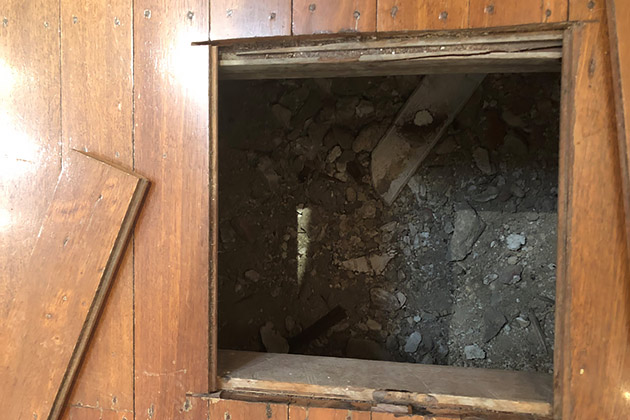
Do you need a building inspection on a new home?
From a compliance perspective, new homes should also be inspected.
If there’s a compliance issue, this is the homeowner’s opportunity to get it dealt with by the builder under the WA Building Commission guidelines before they take possession of the home.
The Australian Standards, which state the minimum requirements for home construction, are continually changing. Sometimes not all of those changes filter down to the tradespeople working on your home a quickly as they should.
For example, if the Housing Industry Association changes a requirement, where a tradesperson is not aware of this immediately, they may continue to carry out non-compliant work.
While this doesn’t necessarily mean the work is structurally faulty, it isn’t picked up at the time and dealt with by the builder, when it comes time to sell the home down the track, if a pre-purchase inspection finds noncompliant work, the seller will be forced to rectify this at their cost to bring it to a compliant state.
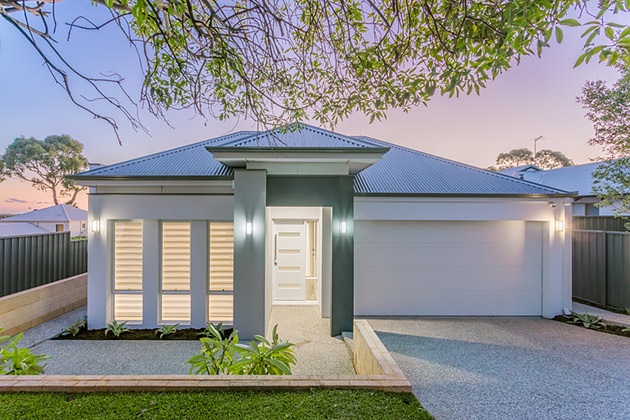
What about flats and apartments?
While a building inspection is not as critical on a flat or apartment it can still provide peace of mind.
Some flats and apartments may use a cladding which is not a fire-resistant product. A building inspection will also check common areas as some may be dilapidated, and ensure items such as hand railings are safe.
Buying at auction
If buying at auction, be cautious of any property being auctioned as an “as is” sale. It means that while the home is structurally safe to occupy as a minimum requirement, any other defects are not negotiable.
“For someone buying at auction, before hammer goes down, they need to ensure they have that ‘due diligence’ clause in the Offer to Purchase. If buying at auction always say, ‘subject to due diligence’.”
